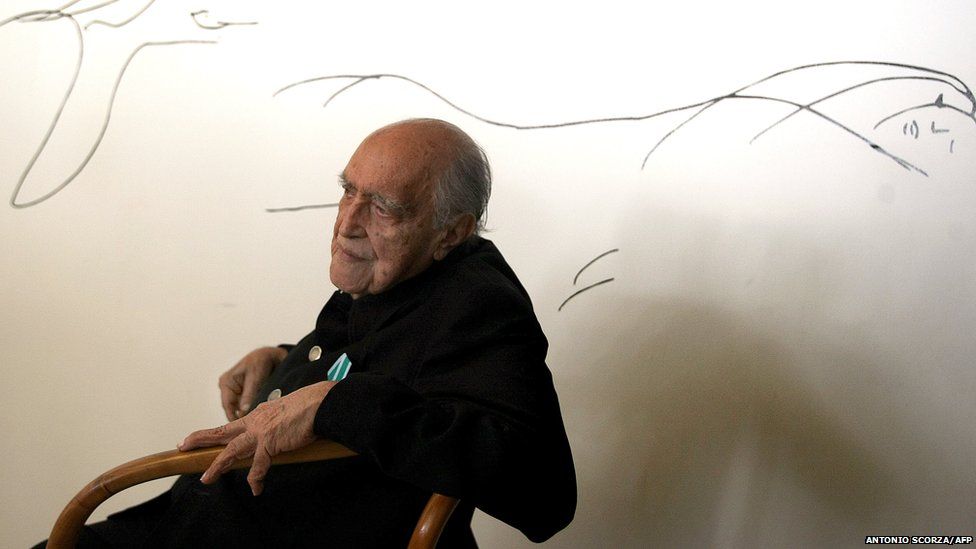In pictures: The work of Oscar Niemeyer
- Published

Oscar Niemeyer, pictured here in 2007, was one of the most innovative and daring architects of the past 60 years.
Image source, EVARISTO SA/afp
Niemeyer co-designed Brazil's purpose-built capital Brasilia. It is the archetypal planned town, built from scratch on the desert-like Central Plateau in the late 1950s.
Image source, AFP
Niemeyer, a protege of Le Corbusier, dreamed up buildings of planes and curves strung along a central boulevard known as the Esplanade of Ministries.
Image source, EVARISTO SA/afp
The city was the brainchild of Juscelino Kubitschek de Oliveira, who was the Brazilian president between 1956 and 1961.
Image source, AFP
The project was highly ambitious but was officially inaugurated just four years after work was started in 1956 and includes buildings such as the National Cathedral - a crown-shaped structure of glass suspended between concrete struts which sweep upwards and inwards and then reach out to the heavens.
Image source, AFP
Rather than dark and forbidding like the interiors of older cathedrals, the inside is awash with light.
Image source, Kurt Hutton/Getty Images
Niemeyer was Brazil's best-known architect. The last giant of the modern movement, he is a very Brazilian modernist, sculpting curves from concrete.
Image source, ROBERTO SALOMONE/afp
Rejecting the cube shapes favoured by his modernist predecessors, Niemeyer built some of the world's most striking buildings - monumental, curving concrete and glass structures which almost defy description.
Image source, VANDERLEI ALMEIDA/afp
Concrete, curves, colour - the Museum of Modern Art in Niteroi, across the bay from Rio de Janeiro, typifies Niemeyer's style.
Image source, VANDERLEI ALMEIDA/afp
Visitors enter the saucer-shaped cliff top gallery - which Niemeyer has likened to a flower reflected in the pool at its base - via a snaking ramp.
Image source, Emma Lynch/BBC
In the course of his long career, he snapped up just about every important commission going in Brazil - to some resentment from his peers. He accepted that great buildings were often the reserve of the rich - but he hoped that he could provide joy and amazement for ordinary people.
Image source, Getty Images
Oscar Niemeyer was born into a financially comfortable family in Rio de Janeiro in 1907. After graduating in the mid-1930s, he joined a Rio architectural firm.
Image source, AFP
Having won wide praise for a number of buildings in Brazil, he was chosen in the early 1950s to be part of an international team given the task of designing the UN buildings in New York.
Image source, MYCHELE DANIAU/afp
Niemeyer was a life-long communist so when a military dictatorship came to power in Brazil in 1964, he was forced to move to France. However, his work took him all over the world. While in exile, he continued to pick up almost every major commission in Brazil, as well as exporting his signature curves to the world. This is Le Havre's "volcano" arts centre, designed in 1982.
Image source, FABIO MOTTA/ap
In the 1980s he returned to Rio - his true spiritual home.
Image source, Felipe Dana/ap
Niemeyer continued working even after his 100th birthday.